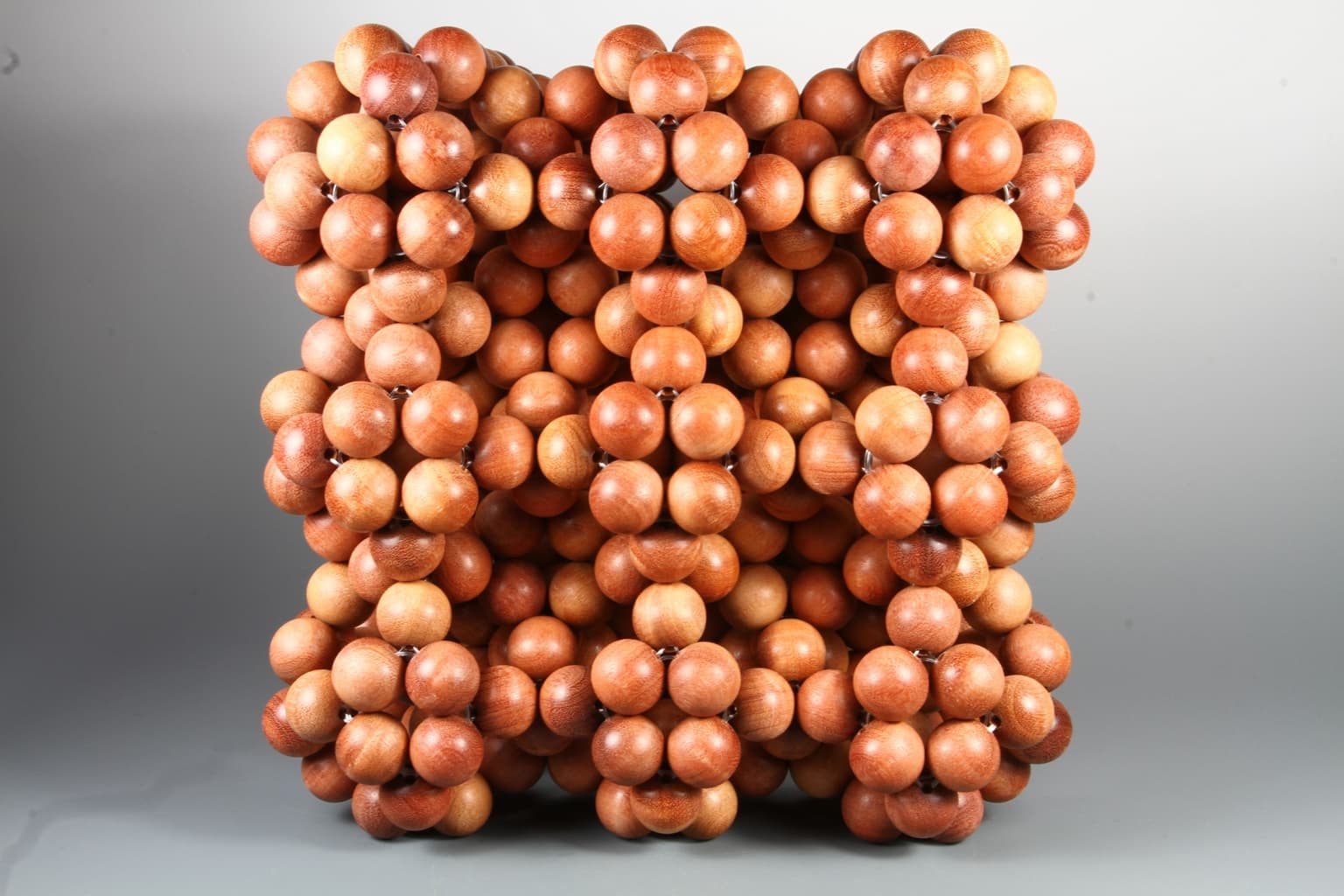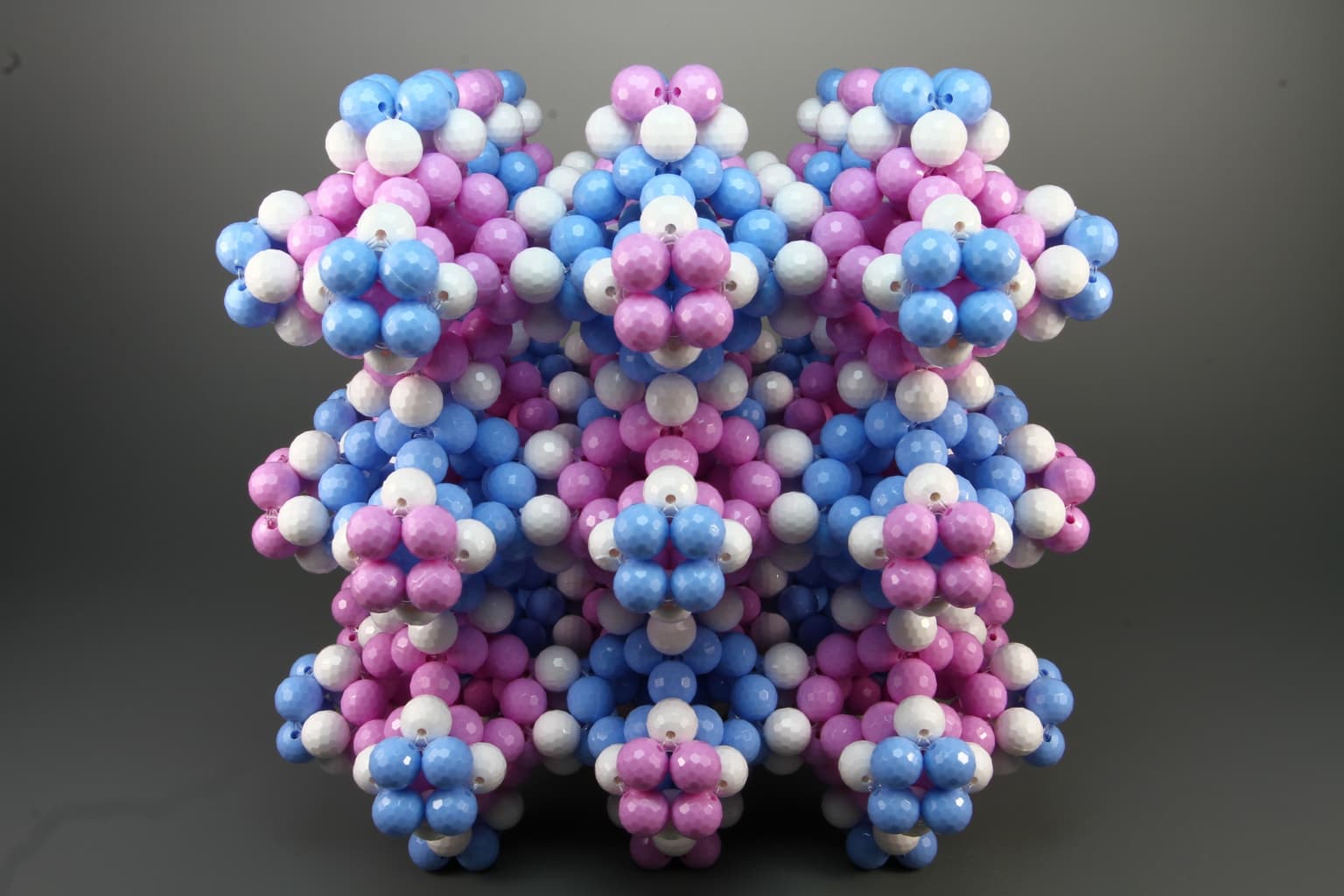Chia-Chin Tsoo & Bih-Yaw Jin
Artists
Bih-Yaw Jin
Professor
Department of Chemistry, National Taiwan University
Taipei, Taiwan
Statement
Zeolite, a family of aluminosilicate minerals based on the TO4 tetrahedral units, where T is an aluminum or silicon cation and O is an oxygen anion, provides a best example of the minimum inventory/maximum diversity systems of Peter Pearce. A rich variety of zeolite structures can be thought to consist of a few polyhedral building units, such as truncated octahedra, prisms, and dodecahedra, which again are made up of vertex-linked tetrahedra with oxygen anions located at vertices. Here, we show that the mathematical beading can be used to construct the hard-sphere open packing models of these zeolite structures, in which spherical beads represent oxygen anions; while smaller cations hidden inside the tetrahedra are not shown in the model.
Artworks

Bead model of Sodalite structure
20 x 20 x 20 cm
17mm Wooden beads
2015

Bead model of Zeolite A structure
18 x 18 x 18 cm
10mm plastic beads
2015